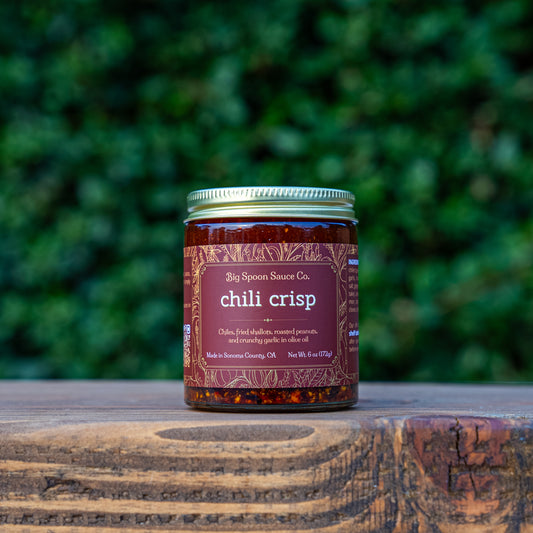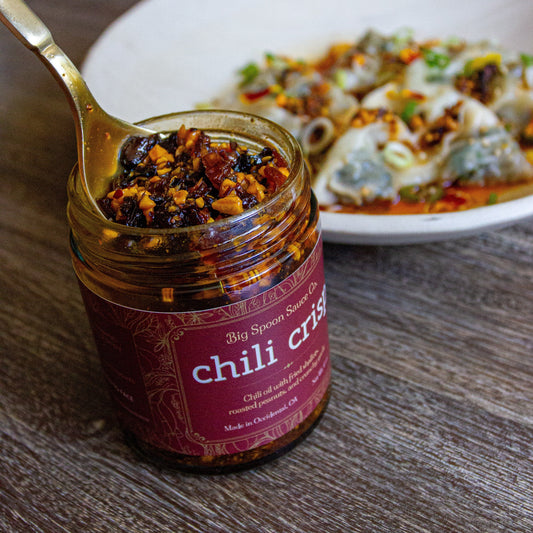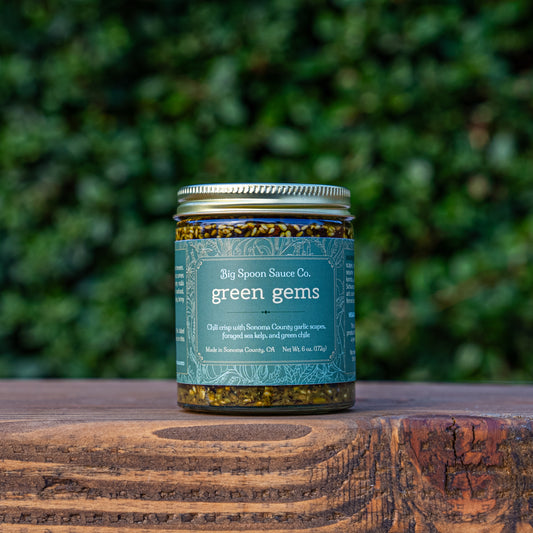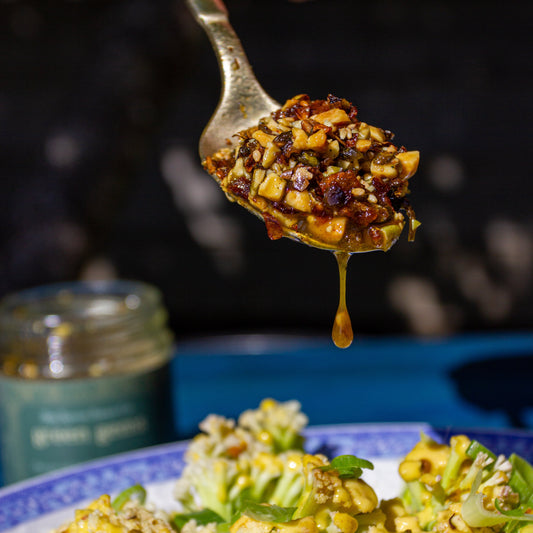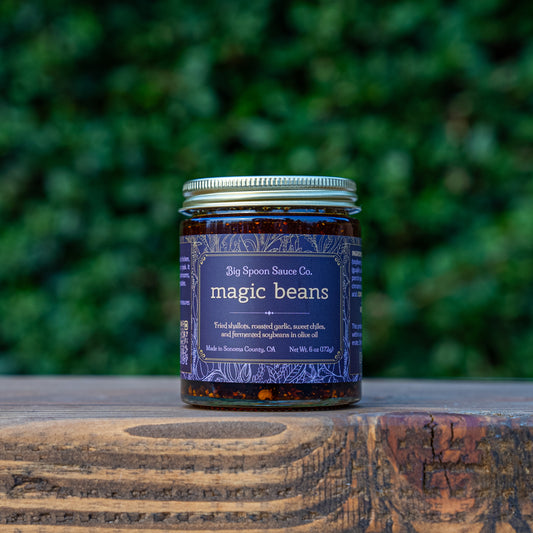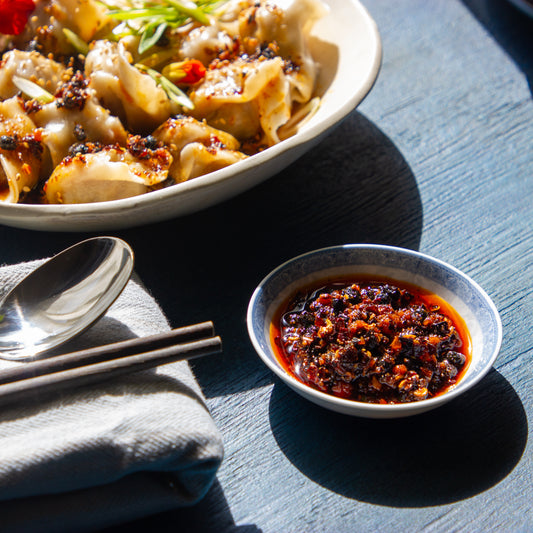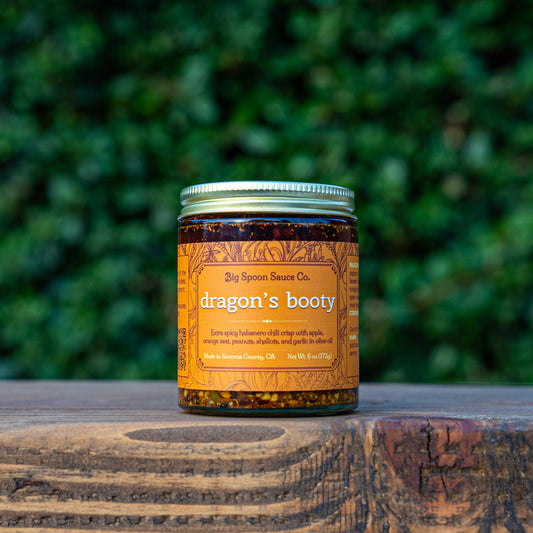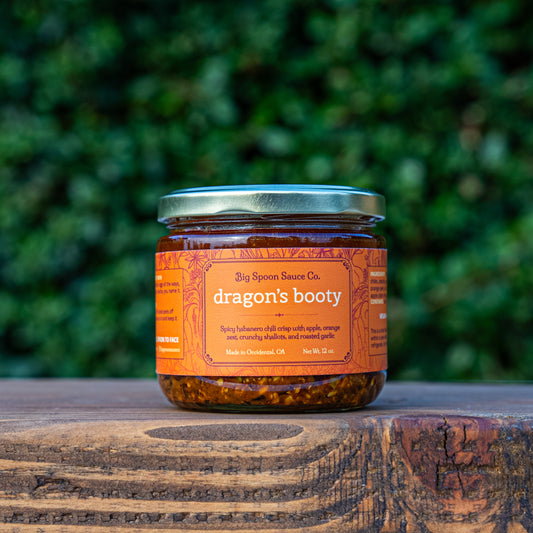
Last year, I began my herbal medicine education at the California School of Herbal Studies here in Sonoma County. I’ve continued it this year through an apothecary garden CSA, integrating more herbs into my lifestyle through teas, skincare, and food. It has been a gift to learn and really feel the support of plants, and to know that I have a reliable toolbox to help manage life’s demands.
Herbs enable us to become more resilient and show up for ourselves and our communities. When our systems become overwhelmed from managing social engagements or working long hours or juggling post-election stages of grief, something as simple as a hot bowl of plant magic can feel radical and empowering. Eating jook throughout the busiest season of the year has kept us from getting sick and picked us up on those days when we’re fresh out of marbles.
Food is medicine. It is truly a joy to share it with you.

‘If you can see your breath, we’ll have jook at the market.’ - Nate
This is the recipe for the jook we bring to the farmers’ market. It started as something just for us— a small portion for warmth in our thermoses during the winter months, when those early setup hours meant we’d be working in the dark. Last fall, we decided to share it with our customers, offering bowls for sale. Today, on those especially chilly mornings, bowls of jook topped with Big Spoon chili crisp sell out quick.
While I grew up eating jook made with chicken stock, I adapted this recipe to be vegetarian-friendly and added an herbal formulation to help defend against holiday-season stresses. For the broth, I use a blend of immune-supporting herbs like astragalus, nettles, and reishi, paired with gut-nourishing plants like foraged kombu and fresh ginger. To make it extra flavorful, I add aromatics like wild porcini mushrooms, scallions, and whole peppercorns. The broth simmers on the stove overnight, allowing the herbs, mushrooms, and roots ample time to fully release their therapeutic compounds. I strain the broth in the morning and cook pre-soaked rice in it to make jook.
You could stop here and it’ll still taste great. But for market toppings we always offer soy-marinated boiled eggs, a choice of whichever Big Spoon chili crisp is calling to you that day, and something fun like Dan Dan mushrooms or Magic Beans-braised pork. Here are recipes for all the components so you can enjoy this at home. You’ll want to start the night before to enjoy it for breakfast.
Jook
Serves 6-8. Stores well for leftovers.
1 cup white rice
Stock
8 cups water
1 strip kombu seaweed
1 handful dried nettles
3-4 whole scallions
1 thumb-sized knob of ginger, sliced
6-8 slices dried porcini mushrooms
5 slices astragalus root
5 slices dried reishi
1 tsp white pepper
1 tsp whole black peppercorns
Big pinch of salt
- Cover your rice with water in a container and set aside.
- Make your stock: In a stockpot, bring the water with all the ingredients to a boil. Lower to a simmer, cover, and let sit overnight, or at least 2 hours.
- Strain the broth and compost the herbs and roots. Add the strained stock back to the pot.
- Drain your soaked rice, but don’t rinse— the starch is important for a silky texture. Stovetop instructions: Add the rice to the pot of stock. Cook, covered, over low heat. Check after 90 minutes. Add water if necessary and/or continue cooking until it reaches desired consistency. Tip: turning off the heat and letting the jook continue to steam, covered, will usually take care of any sticky bottom issues.
- Rice cooker instructions: Add stock and drained rice to the rice cooker and turn the rice cooker on.
- Instant Pot instructions: Add stock and drained rice to the Instant Pot and cook under high pressure for 20 minutes with a natural release.
Tea eggs
1 dozen eggs
Brine
2 c water
2 c soy sauce
¼ c mirin
1 T black tea (or 2 teabags)
1 t five spice
Knob of ginger, sliced
- Gently add eggs to a large pot of boiling water.
- After 8 minutes, use a slotted spoon to transfer the eggs to an ice bath.
- While eggs are cooling, make the brine. Combine all ingredients in a small saucepan. Bring the mixture to a boil and let simmer for 5 min. Remove from heat and allow to cool.
- Peel eggs and place in a sealable container.
- Place a strainer over the container and pour the brine over the eggs. Compost the tea and ginger.
- Let the eggs sit in brine for 4+ hours before serving.
Mushrooms in dan dan sauce
1 lb mixed fresh mushrooms: maitake, trumpet, oyster, etc. torn into pieces
1 T olive oil
salt
Sauce
¼ c Chinese sesame paste
3 T oil from your favorite Big Spoon jars
3 T soy sauce
2 T unseasoned rice vinegar
1 T sesame oil
1 T fresh ginger
1 T garlic
1 ½ t sugar
1 t Sichuan peppercorns, ground
- Combine all sauce ingredients in a food processor or use an immersion blender. Blend until smooth.
- In a saucepan, heat olive oil. Add your mushrooms. When softened, add a pinch of salt to taste. Continue cooking until mushrooms are silky, about 7 minutes. Remove from heat.
- Add about a third of your dan dan sauce to the mushrooms and stir until well combined.
To serve, portion jook into bowls. Garnish with tea eggs, mushrooms, scallions, and Bear Hug chili crisp.

